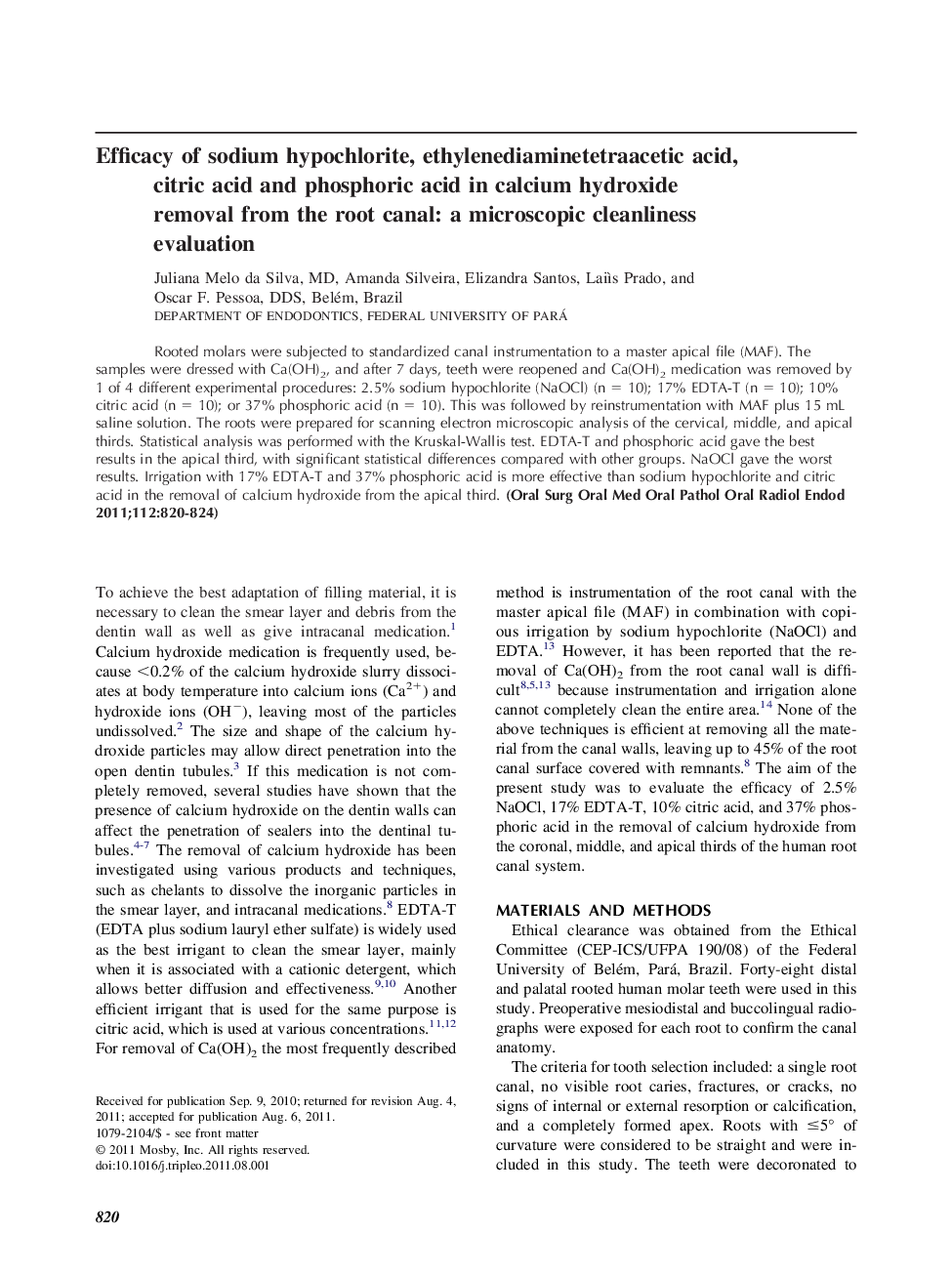| Article ID | Journal | Published Year | Pages | File Type |
|---|---|---|---|---|
| 6059501 | Oral Surgery, Oral Medicine, Oral Pathology, Oral Radiology, and Endodontology | 2011 | 5 Pages |
Abstract
Rooted molars were subjected to standardized canal instrumentation to a master apical file (MAF). The samples were dressed with Ca(OH)2, and after 7 days, teeth were reopened and Ca(OH)2 medication was removed by 1 of 4 different experimental procedures: 2.5% sodium hypochlorite (NaOCl) (n = 10); 17% EDTA-T (n = 10); 10% citric acid (n = 10); or 37% phosphoric acid (n = 10). This was followed by reinstrumentation with MAF plus 15 mL saline solution. The roots were prepared for scanning electron microscopic analysis of the cervical, middle, and apical thirds. Statistical analysis was performed with the Kruskal-Wallis test. EDTA-T and phosphoric acid gave the best results in the apical third, with significant statistical differences compared with other groups. NaOCl gave the worst results. Irrigation with 17% EDTA-T and 37% phosphoric acid is more effective than sodium hypochlorite and citric acid in the removal of calcium hydroxide from the apical third.
Related Topics
Health Sciences
Medicine and Dentistry
Dentistry, Oral Surgery and Medicine
Authors
Juliana Melo MD, Amanda Silveira, Elizandra Santos, Laiìs Prado, Oscar F. DDS,
